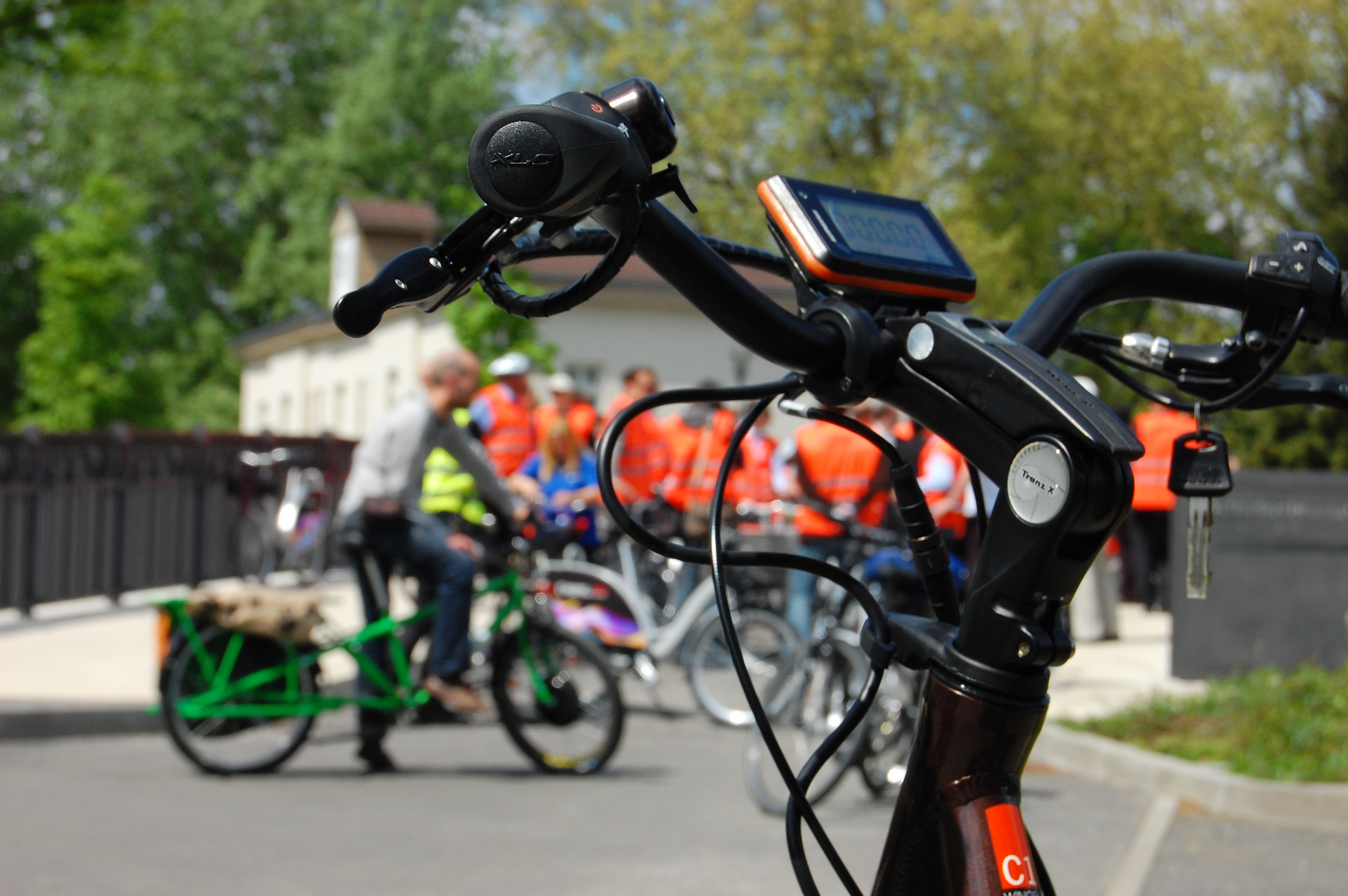
Smarter Cycling Series: What if your bicycle could tell you when it is in trouble?
As part of our work to help cycling and the bike industry into the world of smart, connected and shared mobility we are working with visionaries and leaders who are setting the tone in this new mobility. We are going to be inviting some of them to share their thoughts and visions with ECF.com in the coming months.
 Joost Legtenberg is Business Developer at AXA Bike Security, a company manufacturing accessories for bike security and safety. Evolving from one of their projects coupling technology solution and security, they have partnered up with Conneqtech, Sparta and Vodafone to create a fully connected bicycle.
Joost Legtenberg is Business Developer at AXA Bike Security, a company manufacturing accessories for bike security and safety. Evolving from one of their projects coupling technology solution and security, they have partnered up with Conneqtech, Sparta and Vodafone to create a fully connected bicycle.
Cities are getting smart(er), buildings are being sensorised, buses and trams are communicating to each other, cars are becoming more intelligent (if a car can be intelligent at all): but what about bicycles? What are the problems technology can help to solve? In what direction is evolution bringing the cycling sector?
We’ll look back at bike theft and laugh
Among the main reasons given by people when asked why they don’t commute by bicycle is for fear of theft. Reports from authorities scattered all over the world tell us the amount of bicycles stolen every year literally sums up to millions, and this has a big impact on modal share1. Above all with the boost of sales in e-bikes, which tend to be several times more expensive than traditional ones, proper measure are needed to avoid theft – or at least to be sure there’s a way to recover.
Several companies have tackled the problem in their own way, none of which has really been a game changer: simply put - the stronger the lock, the bigger the tools used. And people don't seem to be too worried about bicycle thieves 2. Luckily, there are smart people addressing the issue, and it's very interesting to see the direction innovation is taking. Thanks to technology, we are now able to give the physical reality we experience every day a new, virtual layer: we call this invisible infrastructure. And while it cannot physically prevent thieves from cutting and clipping chains, it can ensure they don't ride too far.
 Giving bicycles awareness
Giving bicycles awareness
In collaboration with Conneqtech, AXA Bike Security created the Connect module that enables the bicycle to be in constant contact with their owners via a smartphone, unleashing the full power of these mobile computers we always carry on ourselves. Among other things, it can setup a virtual fence, and as soon as the bike is outside that area, is moved or falls over, a notification is sent on their phone. And if the bicycle really gets stolen, another alert will warn the owner if it’s travelling at more than 50km/h (meaning it is being transported on a truck) and GPS location can finally help the police locate it and retrieve it. But this is just the first step.
One of the core elements that allowed humans to spread and prosper all over our planet is communication. The ability to give and receive information to take better informed decisions and coordinate actions is at the basis of a lot of further development. Enabling bicycles to collect data from their surroundings and to exchange it with road vehicles, with the infrastructure, with people’s smartphones or with other bicycles will open a wide range of possible products and services.
This kind of connectivity used to be thought of as the future. But it is not anymore.
The key-word is: connectivity
Through AXA’s app all kind of insights on the bike’s status and the rider’s behaviour can be visualised: from the most basic, as the number of kilometres ridden and of calories burned, to more (socially) interesting features, such as the CO2 emissions avoided. These items can all be shared via social media to put cycling in the showcase and hopefully raise awareness on its overall benefits to individuals and communities.
You can even see where the bikes from the whole family are, thanks to the Family Care function, and parents will also receive a message when the child has arrived safely at school.
Once a bicycle has been given a computer and “sensorised”, possibilities for connectivity, communication and adaptive route planning are just endless, as further firmware and software updates are always an option.
 And bike manufacturers will benefit as well, since they will be able to monitor how the bicycle performs, how it is used, when it needs to be checked, etc. – and they will keep a contact point with the customer. An AXA dashboard on the manufacturer’s computer includes information such as the distance ridden by each bike, the battery performance and levels, temperature, etc. A message can be easily sent via the app that maintenance is required or that the tires need to be replaced. By analysing the collected data, future decisions or investments can be based on actual information.
And bike manufacturers will benefit as well, since they will be able to monitor how the bicycle performs, how it is used, when it needs to be checked, etc. – and they will keep a contact point with the customer. An AXA dashboard on the manufacturer’s computer includes information such as the distance ridden by each bike, the battery performance and levels, temperature, etc. A message can be easily sent via the app that maintenance is required or that the tires need to be replaced. By analysing the collected data, future decisions or investments can be based on actual information.
This is the present: what about the future?
Further development of these technologies is in full swing. It’ll be possible to offer a bike insurance quote and new services through the same hardware. This means more customer convenience and additional revenue for the manufacturers. With these components coming up, improving the bicycle’s quality and experience will be something based on quantitative evidence, as well as giving advices and offering new services and solutions.
Regions:
News category:
Network/Project Involved:
Contact the author
Recent news!
Upcoming events
Contact Us
Avenue des Arts, 7-8
Postal address: Rue de la Charité, 22
1210 Brussels, Belgium









